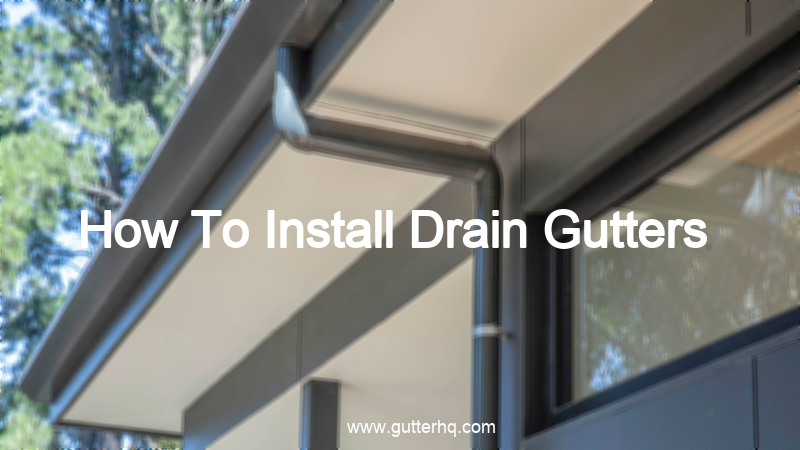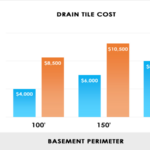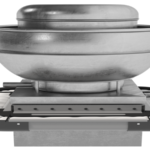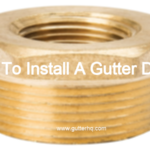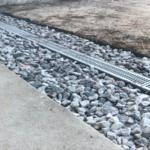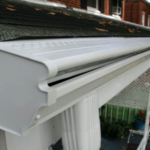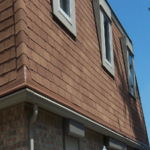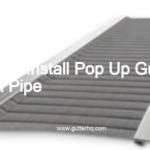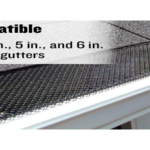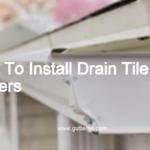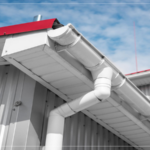- Begin by measuring the length of your home’s perimeter and purchasing enough gutters to cover the entire length.
- Most gutters come in standard lengths of 10 or 20 feet, so you’ll likely need to cut them to size. Use a hacksaw or power saw to make clean, straight cuts.
- Once you have all your gutters cut to size, it’s time to install them. Start by attaching brackets to the fascia board (the horizontal board that runs along the edge of your roof).
- Space the brackets evenly, using the manufacturer’s recommendations as a guide. Then, slide the gutter into the brackets and secure it with screws. Repeat this process until all your gutters are installed.
How do you install a gutter drain?
- Locate the point where the water will flow out of the gutter.
- Cut a hole in the gutter at the location of the drain using a saw.
- Attach the drain pipe to the gutter using screws or bolts.
- Connect the other end of the drain pipe to the desired location for the water to drain to, such as a downspout or a drain in the ground.
- Cover the drain pipe with gravel or rocks to keep it in place and to prevent clogs.
How much does it cost to install gutter drains underground?
Installing gutter drains underground can cost anywhere from $500 to $2,000, depending on the size and complexity of the project. The most important factor in determining the cost of the project is the amount of excavation and grading required. Other factors that can affect the cost include the type of pipe used and the number of downspouts that need to be installed.
How deep should I bury my gutter drain pipe?
- The depth of your gutter drain pipe will depend on a few factors, including the slope of your roof and the type of pipe you are using.
- Generally, you will want to bury your gutter drain pipe at least 2 feet deep, in order to ensure that it is not damaged by freezing temperatures or heavy rains.
- If you live in an area with heavy rainfall, you may need to bury your gutter drain pipe even deeper, in order to prevent flooding. Ultimately, you will need to use your best judgment to determine the ideal depth for your gutter drain pipe.
Are underground gutter drains worth it?
There are a few factors to consider when deciding if underground gutter drains are worth it for your home. The first is the climate. If you live in an area with a lot of rainfall, snowmelt, or other sources of water near your foundation, underground drains can help keep that water away and protect your home from flooding or water damage.
Another factor to consider is the type of foundation you have. If your foundation is made of porous materials like concrete, underground drains can help keep water from seeping in and causing damage. In contrast, if your foundation is made of materials that don’t absorb water, like stone or brick, underground drains may not be as necessary.
Finally, it’s important to consider the cost of installation and maintenance when deciding if underground gutter drains are worth it. While the initial investment may be higher than traditional above-ground gutters, underground drains can often be less expensive to maintain over the long term.
Do pop up gutter drains work?
Pop up gutter drains are a type of gutter drain that is installed at the low point of a gutter system. The pop up drain has a small flap that is opened by the weight of water as it flows down the gutter. The flap allows the water to enter the pop up drain and be carried away from the foundation of the house. The pop up drain is an effective way to keep water from pooling in the gutter and causing damage to the foundation of the house.
How far away from house should gutters drain?
The gutters on your house should drain water at least 6 feet away from the foundation of your home. If the gutters are draining too close to the foundation, it can cause problems such as water seepage into your basement or crawl space.
What is the best pipe to use for underground gutter drainage?
There are several types of pipe that can be used for underground gutter drainage, but the best option is a corrugated HDPE pipe. This pipe is durable and resistant to corrosion, which makes it ideal for use in a damp environment. Additionally, HDPE pipe is flexible, which makes it easy to install in tight spaces.
Bottom Line
If you’re looking to install drain gutters, there are a few things you’ll need to keep in mind. First, you’ll need to make sure you have the right materials. Second, you’ll need to measure and cut the gutters to the correct size. And finally, you’ll need to install the gutters using the proper techniques.
